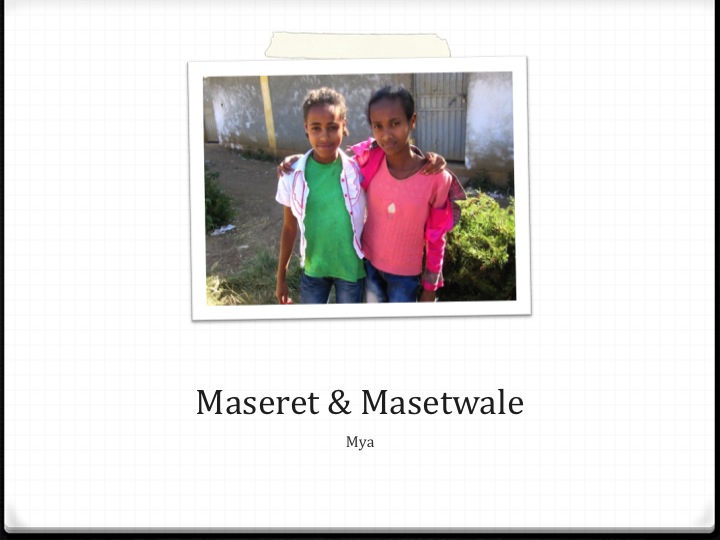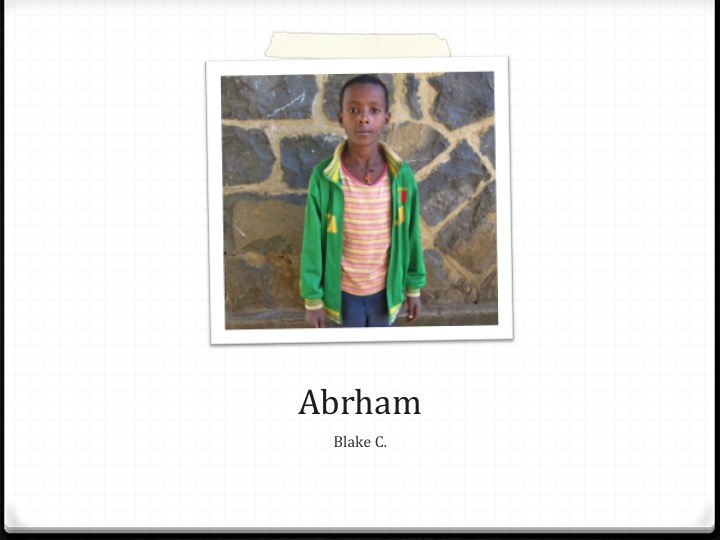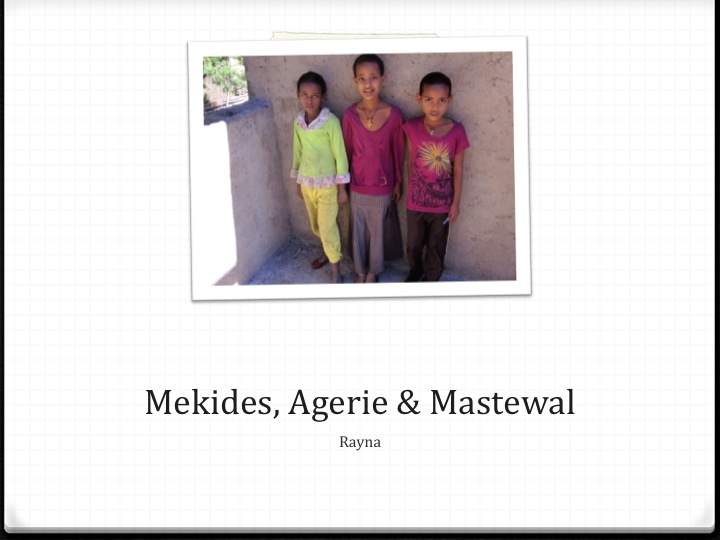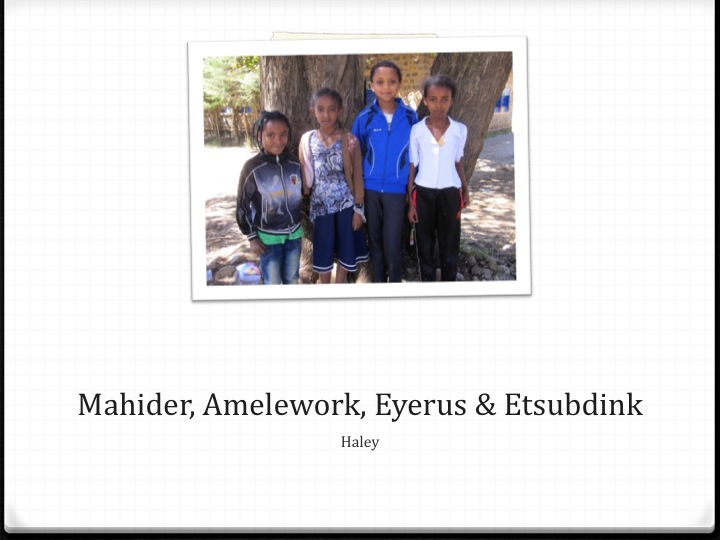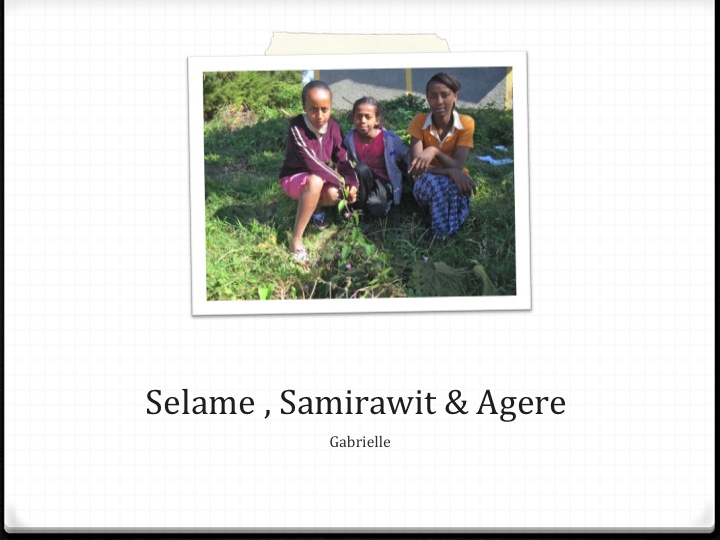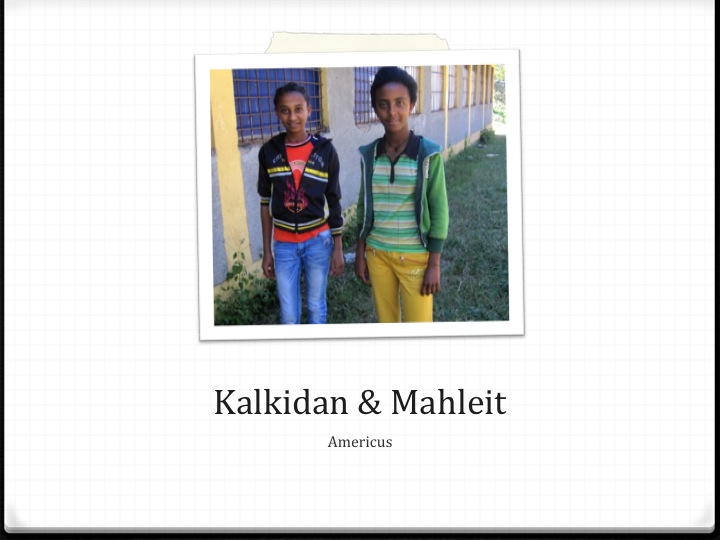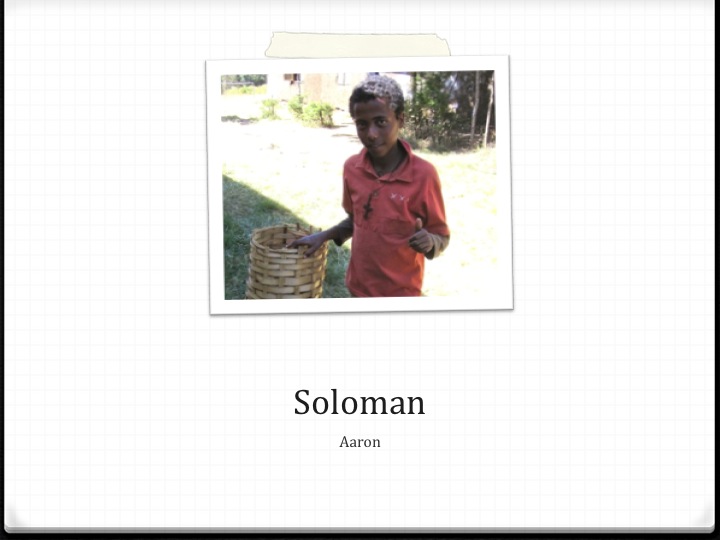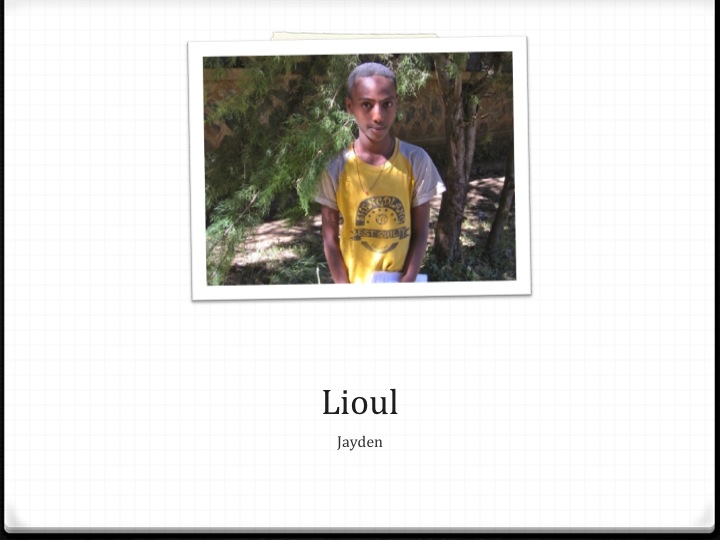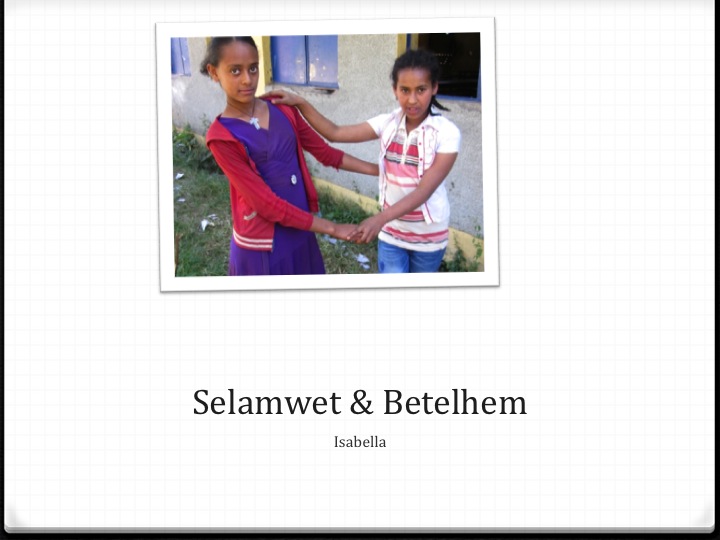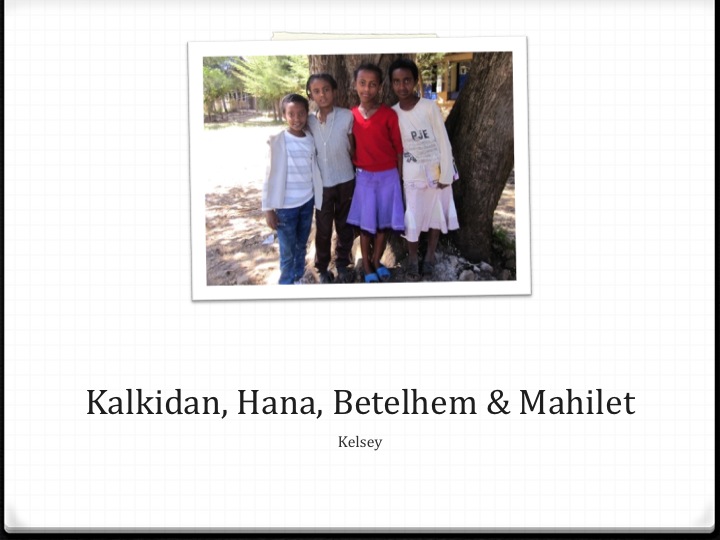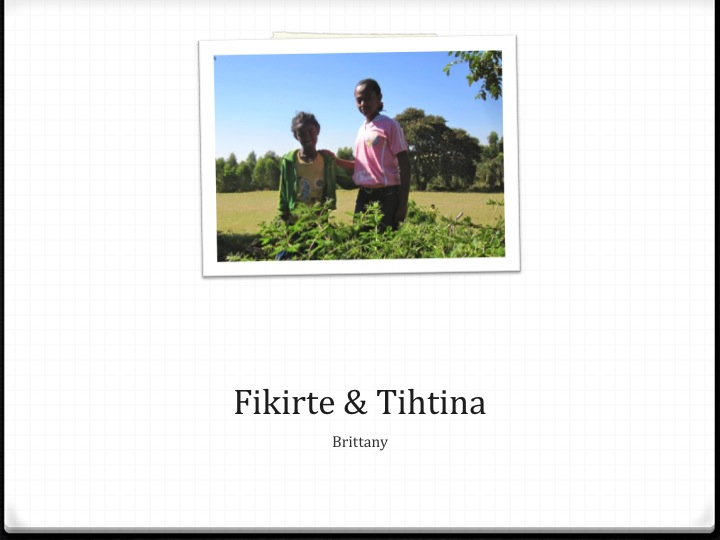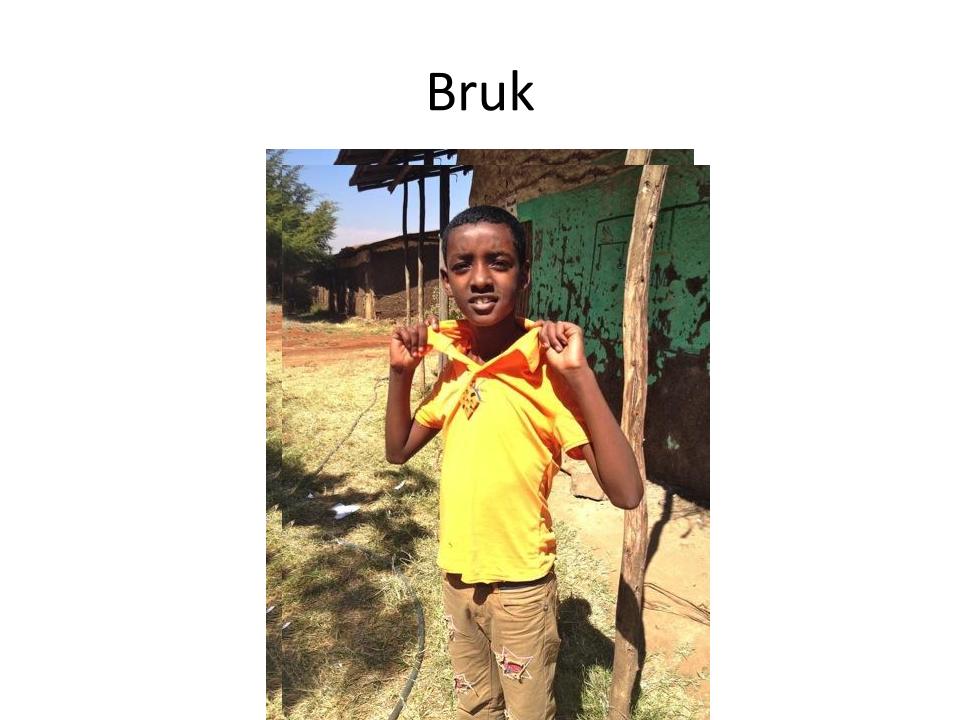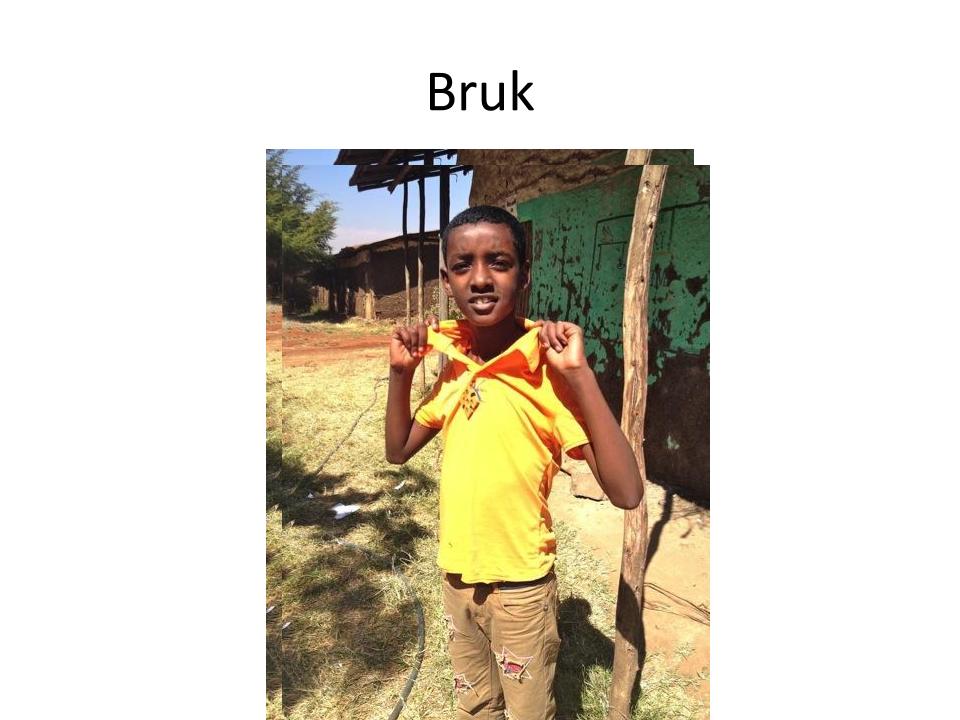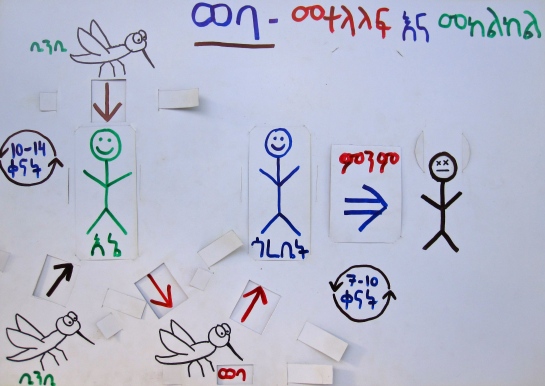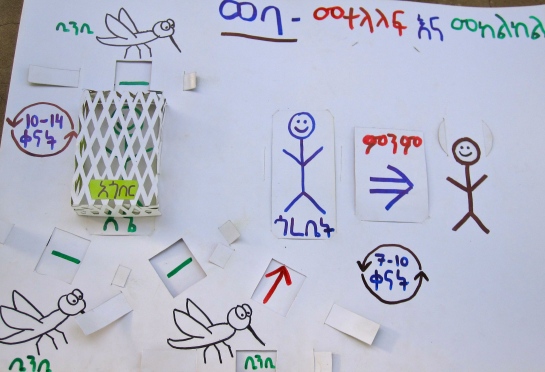Tekamah 6th grade classes have been connected with Corey Lawson, Mrs. McClure's nephew, who is currently in the Peace Corps in Ethiopia. During her Lap Top class each week, Mrs. McClure shares information they receive from Corey by mail, email, Facebook or through his Ethiopian Blog. Students view videos and photos on an overhead projector, type questions and inform Corey of what is going on in the United States. The students have designed cards for Christmas and Valentine's Day. They have also sent laminated coloring sheets they've colored to the Ethiopian children and have taken photos of themselves on the lap tops to send Corey.
Corey made a Nebraska collage of his 6th Grade Students to place in his home as a reminder of his American friends.
See below for a list of questions asked by the students:
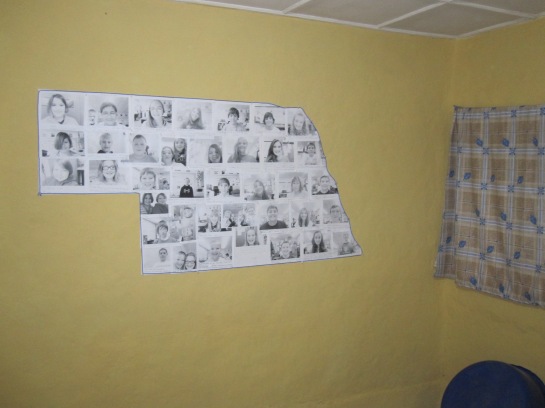
What kind of food do you eat? Do you eat meat? Cheese? Bugs? What is your favorite food? Do you like salmon/pig? What is the weirdest thing you’ve eaten?
Food in Ethiopia is very different. It is actually very healthy for you and tastes delicious! We have something similar to a “farmers market” where people bring in their fresh fruits, vegetables and spices they have grown and sell it to everyone in the town. My favorite is to buy lots of fruits and make fresh juice!
Almost all food you eat here is with your
hands with what is called Injera. It is like a thin sourdough pancake.
Only using your fingers, you break off pieces of the bread and scoop up
the vegetables or what is called wat (stew). It can get very messy and
you get the wat all over your fingers! There are many different kinds
of wat; churro wat (ground soybeans), misir wat (ground lentils), kai
wat (oil, onion, spices) and
Due to religious beliefs some people here don’t eat meat. The town I live in you can’t even buy or order meat from a restaurant on Wednesdays or Fridays. Also, for some holidays they are “fasting”, which means they don’t eat meat, cheese, or eggs. For example, from Thanksgiving to Christmas it was a fasting period so people didn’t eat meat at all!
Cheese is different here because it has to be made at home since there aren’t any cheese manufacturers like Kraft. Try to make cheese at home and you will see how it is different! It isn’t very stringy like we are use to and hardens much more quickly. So when we found REAL cheese in the biggest city in Ethiopia (Addis Ababa), we were very excited since we hadn’t had it for a long time. It’s amazing the things you miss once you no longer have them!
I haven’t met anyone yet who has eaten bugs, nor have I, but I wouldn’t be surprised if some of the people in very rural areas ate bugs. Really, this would be the same in America as I could imagine people eating bugs in remote areas of the country.
I like both salmon and pig, both of which
we do not have here. The only kind of fish I have found here is
tilapia, which is very good! They fish it out of the biggest lake here
in Ethiopia, called Lake Tana, and it is very
The weirdest thing I have eaten is called Kitfo. Imagine eating what looks like raw hamburger and only dipping it in spices. We have to be careful though because it isn’t cooked and you can get sick from eating raw meat.
What kind of sports do they play? Do they like football? What do the kids do for fun?
The most common sport the kids play is soccer. They will find a way to make a ball out of anything just so they can kick it around. Another common sport is Volleyball. The schoolteachers usually play this after school for fun. Nobody here has heard of football or has even seen a football. One of the other volunteers brought a football and the kids didn’t know how to play with it! It was sad to hear that the Huskers lost a few games but hopefully we will do better next year.
What is the weather like? Does it get hot there? How did you get sunburn? Do you have snow there?
The weather here is beautiful year round. They really have two different seasons here, dry and rainy. From September through May it is dry, then they have an intense rainy season from June through August. They get lots of rain, so much that most things shut down. This is when the kids have their “summer” break. Imagine instead of your summer break being hot, it was rainy every day! I guess there would be different kinds of things to do for fun compared to our summer in America.
Even though we are close to the equator, the elevation of the land is much higher. The town I live in is roughly Ethiopia’s average elevation, which is 7,000 feet! I got sunburn the first week of being here because I went to a town at 10,000 feet and was outside for only 3 hours. I even wore sunscreen!
We don’t have snow here because the coldest it gets is around 40°F. Some of the areas are the hottest in the world, more than 115°F year round. I am very lucky because my town is very confortable, as it will stay in the 70’s and 80’s throughout the year. There was one night here when it started to hail (pea size), which is very rare, and people thought it was snow. I tried to explain that it was hail and what the difference was, but to them this was their “snow”.
Do they know Justin Bieber? Do they have pop stars?
Lots of people here know about Justin Bieber. Some families have satellite/dish television and get a version MTV so they get to hear a lot of American music. I was travelling on a bus to my town and someone was playing Justin Bieber on his phone and a few people in the bus were singing along, even though some didn’t know how to speak English.
Ethiopian music is very popular and is very unique to the types of dances. There are over 75 Nationalities, or cultures of people, and almost every one has a different dance. There is a lot of shoulder movement, head bobbing, jumping and dancing in a circle.
What is the Gari like? Do they have other animals? Do they have pets there?
The Gari is a horse and cart for travelling places where cars aren’t common. It is a cheap way to travel and is commonly used for people who need to get things to the market to sell. On average, it really only costs maybe fifty cents to a dollar to take one through the town. Another common animal used for transportation are donkeys. They are used to carry water and other things, as sometimes it can be a distance of 30 minutes to an hour to get water.
Most animals serve a purpose so there aren’t really any pets. There are dogs and cats, but they are used as protection or to keep away the mice/rats.
How many kids have you met? How skinny are the kids?
I have met LOTS of kids here. Since most kids stay in the small towns and never travel or move away, it isn’t common to ever see a foreigner (someone from a different country). Every time I go outside or walk somewhere, there are many kids who are interested and will shout things just to get my attention. A very common thing they shout is “What is your name?” Most kids have learned English sayings from others and they don’t even know what it means, just that it is English and the foreigner should know it. Even when I tell them my name, they will keep shouting it over and over.
There are many organizations now in Ethiopia that have helped with child nutrition. Even the government here has started programs to detect malnutrition, which is when someone doesn’t get enough to eat or the right types of food to eat. They can give families a powdered mixture to mix with water, eggs and oil to get the nutrients they need. Even though nutrition has been a problem in the past, there has been excellent education to help people understand the importance of feeding babies the right things and how to detect problems early in order to save lives.
What do you miss most about home? Where are you from? Do you miss your family?
I of course miss being able to hang out with my family. This is the first time to be so far from home that I missed the Holidays for the first time. My parents, little brother and sister live in Blair. All of my other brothers and sisters would go to Blair on the weekends to play games and grill out. It’s something I truly miss and is also what makes me remember of all the good times we had together. It also gives me something to look forward to when I am able to come visit.
What is school like? Is the language hard to learn?
Schools here have many similarities and some differences. The Primary Schools are Grades 1-8 and Secondary Schools are Grades 9 and 10. Then they take a National standardized test to get into Grades 11 and 12. If you don’t pass the test you can go to a Trade school to learn about teaching, wood/metal shop, farming and others.
The local language can be hard to learn since there are many different languages in the country. The National language is Amharic, which I learned, but there are also others depending on what part of the country you are in. Amharic is difficult because you really have to learn two languages. How to pronounce the new words, what the words mean and how to write them since they are like symbols. Other common languages are called Ooromifa and Tigrina.
What is your favorite…thing about Ethiopia, part of your job, color?
My favorite thing about Ethiopia is the people. They are all very welcoming and are never too busy for you. They will go out of their way to help you with something. Life here is much more relaxed. For example, when people visit each other they sit down to drink three cups of coffee. Even though this can take up to three hours, nothing is ever thought of it because you have to provide for your guests. This was hard to learn because in America we are always in such a hurry. No more “I’m just going to stop by their house really quick to grab something.”
My favorite thing about my job is the people yet again. As I said before, they are always willing to help you and will go out of their way to do so. If you ask someone for help, they stop what they are doing and really do want to help you with what you need. Right now I am just learning about the community and haven’t begun any projects for my job, but I’m excited to get started!
My favorite color is green.
How do you bathe?
It isn’t common to have a bath or shower here in Ethiopia. For the first three months with my host family in Boru, I took what is called a “bucket bath.” It’s exactly what it sounds like; you take a bath in a bucket. I am tall so it made it very difficult to take a bath. You sit in the bucket and pour water over yourself. It makes it hard to only have one hand to lather yourself up with soap.
Once I got to my new house in Bure, I was very lucky to have a real shower! Even though it is outside in a tin shed and freezing cold, it makes it much easier to get clean. I will also look forward to it when it gets warmer out and the cold shower will feel good.
Are there Peace Corps Volunteers living near you?
There are now around 200 Peace Corps Volunteers in Ethiopia, so most have either a site mate (someone who lives in the same town) or someone who lives within an hour or each other. I am very fortunate to have a site mate, Lora who is also new, and we might be able to even do projects together. It definitely helps to have another person in the same town that is going through the same changes and is also there to have someone to talk to, in English!


